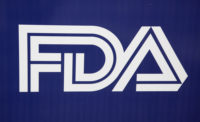The countdown to compliance with the Food Allergen and Consumer Protection Act (FALCPA) is underway, with all food and beverage companies expected to explicitly identify on product labels any of the eight most-common food allergens present by January 1, 2006. "The presence of even one molecule is sufficient to require a declaration," according to Steve Phelan, founder of Formation Systems, Southborough, MA. "The effect on product recalls could be quite dramatic."
While it's likely the FDA will temper FALCPA by defining a threshold level, Phelan says the law raises the bar on knowing the composition of suppliers' ingredients and managing the information in a more efficient way. FALCPA also requires disclosure of low-level preservatives and colorants and restricts the use of catchall phrases such as "may contain" certain ingredients.
An FDA spot check of 118 food items in 2001 found unlabeled peanuts, tree nuts, milk, eggs, soy, wheat, fish and shellfish in 23 samples. Placing the wrong label on the package often produced the error, but processing errors were blamed in many cases, including a failure to account for the composition of the ingredients.
A partial solution is Optiva, Formation's software system that automatically tracks product ingredients and generates FALCPA-compliant labels. "Creating accurate ingredient and allergen information used to be a tedious process that took hours of manual work for each product," says Herb Rau, quality control director of Barber Foods, Portland, ME. "Doing it automatically saves time and money while dramatically reducing the chance of errors."
FALCPA underscores the interdependency of branded the food companies and their suppliers and will provide the impetus for trusted vendor programs, predicts Phelan. Spot checks will suffice with incoming ingredients from trusted suppliers, while deliveries from unknown vendors may be subject to toxicology testing. Companies lacking verifiable traceability will find themselves at a competitive disadvantage, he adds.

